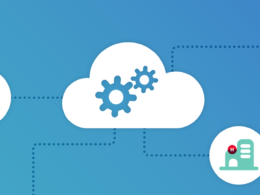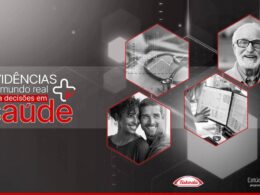Forbes
November 18, 2021
David Riskin
In September, the Food and Drug Administration* published draft guidance on the use of real-world evidence (RWE) to support regulatory decision-making.
While draft guidance might seem underwhelming, it’s a critical step toward a larger, nationwide plan that will ultimately transform healthcare.
Anyone who has ever visited the doctor has likely spent more time in the waiting room than the exam room.
Bedside manner, poor communication and even medical errors are other common concerns and challenges.
And while all of these issues need to be improved, the larger transformation that needs to happen is more fundamental.
The system of evidence-based medicine, representing the foundation of modern healthcare, is crumbling.
When healthcare moved toward evidence-based medicine in the 1970s, the idea was to transition from practicing medicine as an art to practicing medicine as a science.
The industry began performing randomized trials for therapy options to scientifically determine what clinically worked and what did not.
The goal was to determine whether a treatment was safe and effective, and Americans rallied around this expensive but powerful approach.
Unfortunately, this approach became less feasible over time.
- Not only did people begin living longer, they aged with more chronic conditions.
- Adding to this, more and more treatment options were becoming available for each disease.
And so, where the original goal was to determine whether a single treatment was safe and effective for a general population, doctors now must select between multiple treatment options and preferred therapies based on a patient’s unique conditions.
This approach is called “tailored therapy” or “precision medicine.”
If you think healthcare is expensive now, it would be monstrous if we tried to apply randomized trials to this challenge — because we’d have to study all subgroups and compare all treatments.
Massively increasing healthcare costs is not feasible, which is why the current structure is breaking down.
Fortunately, a new pathway is available in the modern world of
- digitized health data,
- powerful artificial intelligence technology and
- scalable compute power.
Every day, millions of unique patients receive treatments chosen out of the many that are available. One set of patients thrives and another does not.
This provides an opportunity to use routinely-collected data to determine what works best and tailor therapy to individual patients.
It’s easy to assume we are already learning from routine care, since this happens in almost every other industry. Just consider Google Maps or Spotify.
But learning from routinely-collected information rarely happens in a systematic way in healthcare. The desire to do so led Congress to promote the use of this real-world evidence in the 21st Century Cures Act of 2016.
Subsequently, health systems, insurers and pharmaceutical firms have all created RWE divisions. A regulatory framework has been issued and draft guidance is available. The RWE industry is booming.
RWE is beginning to bring clinical and financial benefits to stakeholders throughout healthcare.
- Pharmaceutical firms are increasingly using RWE to design and recruit for clinical trials, support financial discussion for drug reimbursement and promote additional uses for marketed therapies.
- Insurance companies use RWE to analyze whether high-cost therapies provide sufficient benefit.
- Physicians, often left to prescribe valuable medications off-label because the real-world patients in their offices do not meet the exact criteria used during trial enrollment, can now augment narrow prescribing information developed during the clinical trial to better match the right medication to the right patient at the right time.
These collective efforts work in tandem to benefit patients, giving them broader access to safer, more affordable therapy options.
But there is a dark side to the booming RWE market. The evidence generated from routinely-collected data is not always believable.
There are good reasons for physicians and patients to be skeptical — just look at the errors made related to hormone replacement therapy decades ago and more recent errors with Covid-19, which famously required retractions from the New England Journal of Medicine and the Lancet.
In addition, patient privacy and security are paramount and are not always addressed in a robust and transparent way.
De-identification, appropriate use of consent and balancing the individual’s needs with those of society must be handled with sensitivity and thought.
These challenges do not mean we should avoid improving healthcare based on our experience, but rather that we must learn how to use real-world evidence appropriately.
That’s why the recent FDA draft guidance is a critical step forward.
- It begins to define the “accuracy, completeness, provenance and traceability” required to produce high-quality evidence from routinely-collected data.
- It focuses heavily on what can be done to combine data sources, enrich data and test AI-based approaches to enable believable clinical assertions. And it puts a stake in the ground that data accuracy is important.
In a field that has not historically measured the accuracy of its underlying data, the issue of accuracy is, for the first time in RWE, being brought front and center.
The standards for high-validity, real-world evidence created today will be adopted by regulators, payers and providers globally to define what evidence is good enough.
In the future, high-quality information will be used to select which treatments are approved, reimbursed and prescribed.
The importance of this transition cannot be overstated.
It opens the door to use thousands of times more information than is currently used in healthcare, creating a path forward for precision medicine to help patients receive the right care at the right time.
The FDA draft guidance may be viewed in a limited way as one more regulatory document.
But I prefer to think the government, industry and providers are coming together in an emerging golden age of healthcare to apply newly available data, technology and processing power to create a better healthcare system.
Dan Riskin, MD, MBA, FACS, CEO and Founder of Verantos
Verantos receives or has received research funding from the Food and Drug Administration, the National Institutes of Health and the National Science Foundation.
Forbes Technology Council is an invitation-only community for world-class CIOs, CTOs and technology executives.
Originally published at https://www.forbes.com.












